Globular Cluster M92
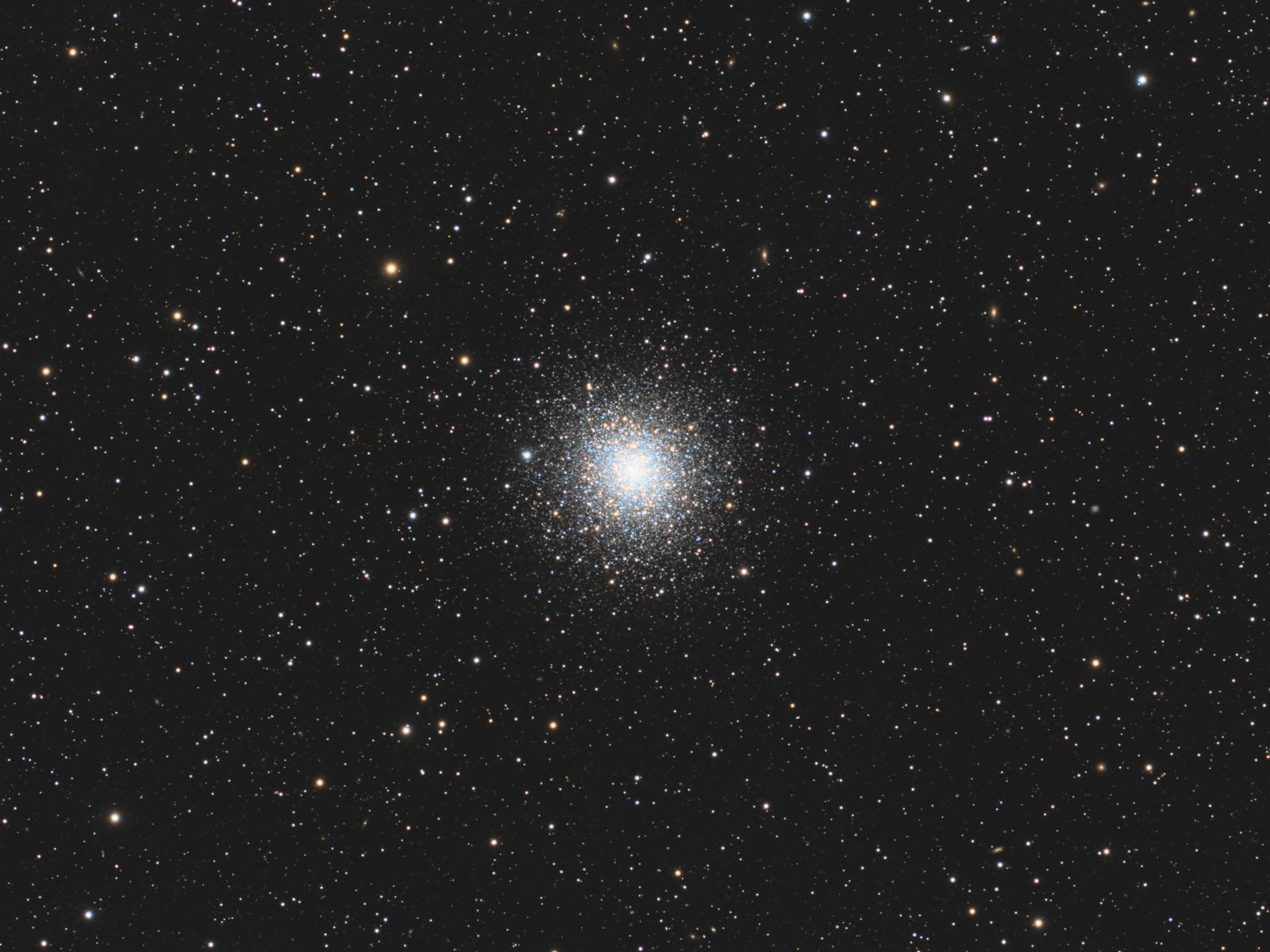
Click image for full size version
May 17, 2021
Globular cluster M92 lies in Hercules, not far from M13, which usually gets more attention from both visual observers and imagers. Late spring is, after all, globular season! M92 is one of my favourite telescope targets, especially in my 20″ reflector. M92 lies about 26,700 light years away from us, and appears a little less than half the width of the full Moon. Its mass is about 200,000 times that of the Sun, and its age is estimated at 14 billion years.
There are many faint galaxies in the distant background that are visible in this shot, some of which are highlighted in an annotated image made from a 2018 shot (note it is inverted relative to the current view).
Tekkies:
Acquisition, focusing, and control of Paramount MX mount (unguided) with N.I.N.A. and TheSkyX. Focus with Optec DirectSync motor and controller. Equipment control with PrimaLuce Labs Eagle 3 Pro computer. All pre-processing and processing in PixInsight. Acquired from my SkyShed in Guelph. Average transparency and seeing. Data acquired May 8-13, 2021 in a moonless sky.
Luminance: Sky-Watcher Esprit 150 f/7 refractor and QHY600M camera with Optolong UV/IR filter
Chrominance: Takahashi FSQ-106 ED IV @ f/5 and QHY367C Pro one-shot colour camera with Optolong UV/IR filter
Luminance 71x5m = 5hr55m
Chrominance 69x5m = 5hr45m
Total: 12hr00m
Data Reduction and Initial Processing
Preprocessing: The WeightedBatchPreProcessing script was used to create two Luminance master frames from the mono camera and an RGB master frame from the one-shot colour camera. The RGB master was registered to the Luminance masters using StarAlignment.
Gradient Removal: DBE was applied to all three masters using Subtraction.
Colour
Colour Balancing: Colour was balanced with ColorCalibration.
Linear Noise Reduction: MultiscaleLinearTransform was used to reduce noise in the background areas, using an internal mask to protect bright structures. Layer settings for threshold and strength: Layer 1: 5.0 0.85, 2 iterations; Layer 2: 3.5, 0.75, 2 iterations.
Stretching: HistogramTransformation was applied to make a pleasing, bright image, with background set to an intensity of approximately 0.10.
Lightness
Combining short and long masters: HDRComposition was used to make a single master Lightness from the short and long masters.
Linear Noise Reduction: MultiscaleLinearTransform was used to reduce noise in the background areas, using an internal mask to protect bright stars. Layer settings for threshold and strength: Layer 1: 3.0 0.85, 1 iterations; Layer 2: 2.0, 0.75, 2 iterations.
Stretching: HistogramTransformation was applied to make a pleasing, bright image, with background set to an intensity of approximately 0.10.
Combining Lightness and Colour Images
LRGB Combination: The lightness image was applied to the RGB image using LRGBCombination with default settings.
Additional Processing
Compression: The core of M92 was compressed in a clone of the image and blended into the original at 25%.
Nonlinear Noise Reduction: TGVDenoise was used in L*a*b* mode to reduce noise with a mask used to target the background areas and protect the stars (max. 1,000 iterations and convergence selected for both lightness and chrominance).
Final Steps: Background and star brightness, contrast, and colour saturation were adjusted in several iterations using CurvesTransformation with masks as required. ICCProfileTransformation (sRGB IEC61966-2.1; Relative Colorimetric with black point compensation) was applied prior to saving in jpg format.

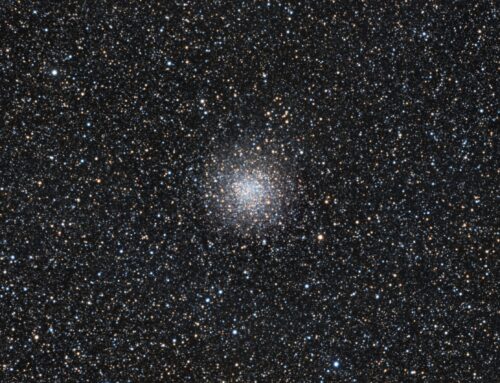
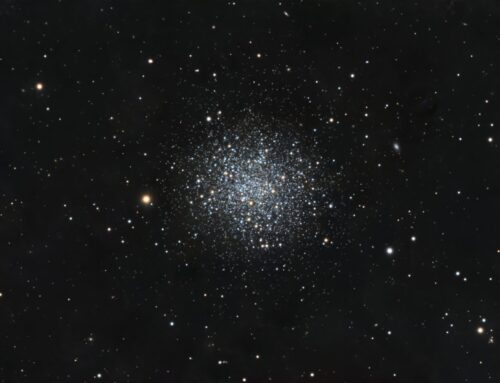
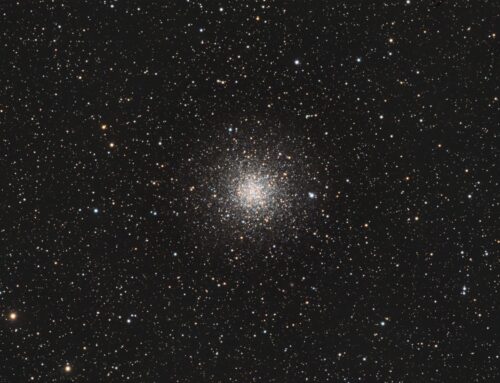
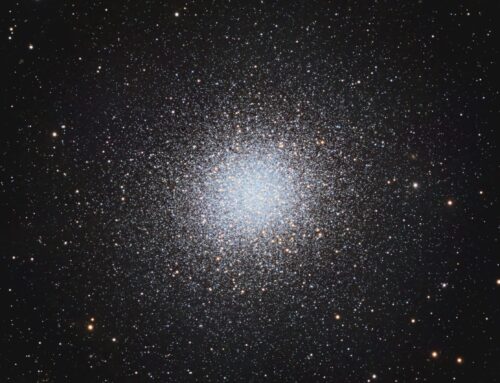
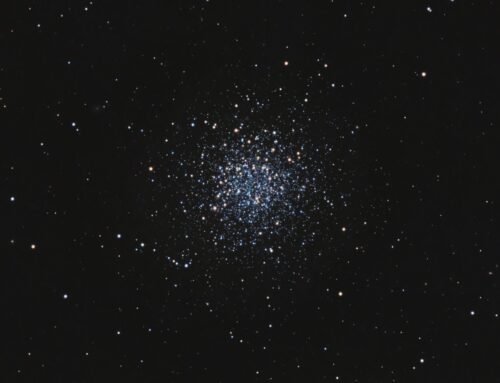
Leave A Comment